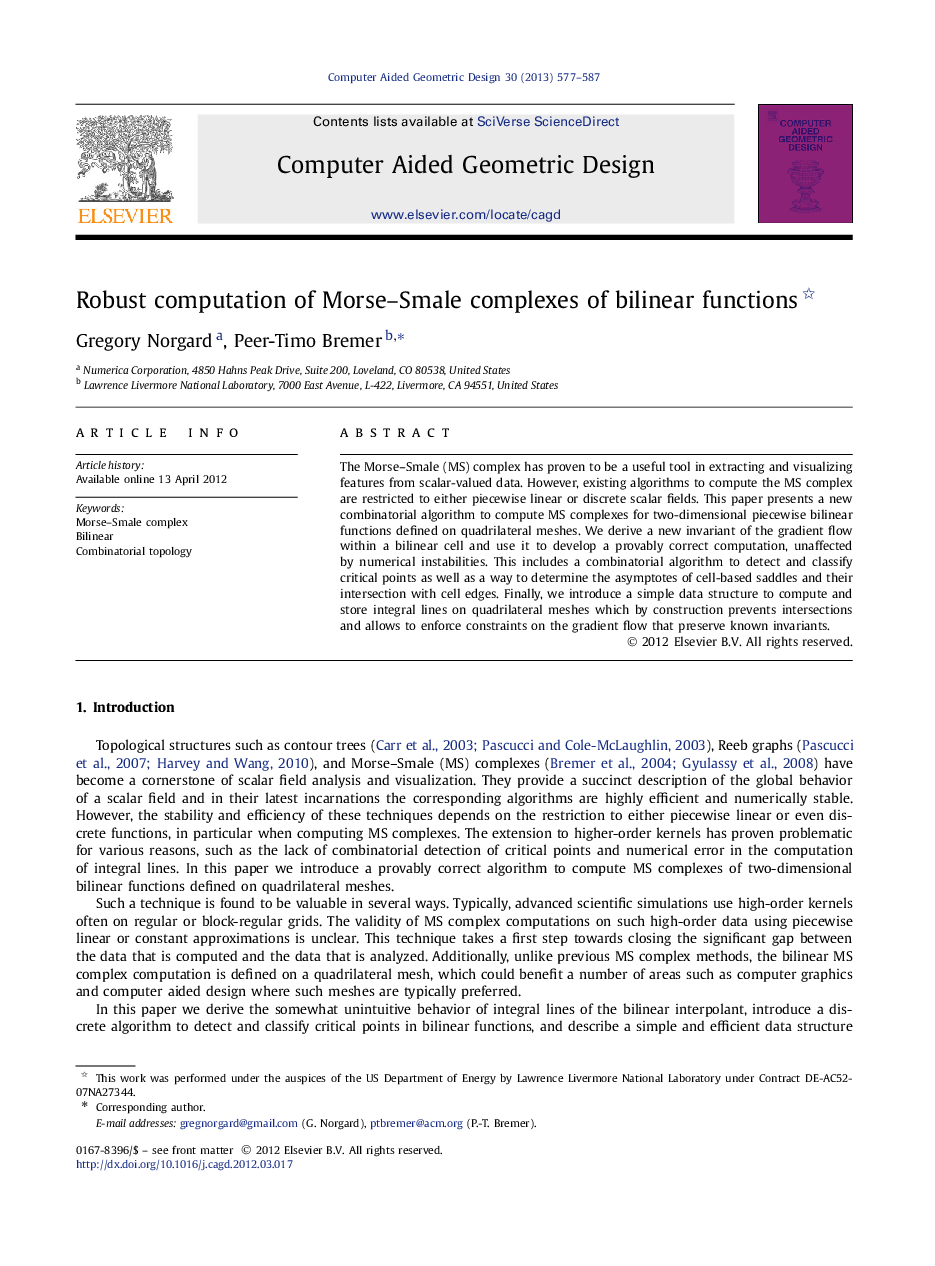| کد مقاله | کد نشریه | سال انتشار | مقاله انگلیسی | نسخه تمام متن |
|---|---|---|---|---|
| 440614 | 691190 | 2013 | 11 صفحه PDF | دانلود رایگان |

The Morse–Smale (MS) complex has proven to be a useful tool in extracting and visualizing features from scalar-valued data. However, existing algorithms to compute the MS complex are restricted to either piecewise linear or discrete scalar fields. This paper presents a new combinatorial algorithm to compute MS complexes for two-dimensional piecewise bilinear functions defined on quadrilateral meshes. We derive a new invariant of the gradient flow within a bilinear cell and use it to develop a provably correct computation, unaffected by numerical instabilities. This includes a combinatorial algorithm to detect and classify critical points as well as a way to determine the asymptotes of cell-based saddles and their intersection with cell edges. Finally, we introduce a simple data structure to compute and store integral lines on quadrilateral meshes which by construction prevents intersections and allows to enforce constraints on the gradient flow that preserve known invariants.
► We examine some unintuitive behavior of integral lines of the bilinear interpolant.
► We combinatorially detect and classify critical points in bilinear functions.
► A simple data structure is developed to store and compute a Morse–Smale complex.
► The topological correctness of the computed Morse–Smale complex is proven.
► This is the first provably consistent MS complex computation for bilinear functions.
Journal: Computer Aided Geometric Design - Volume 30, Issue 6, July 2013, Pages 577–587